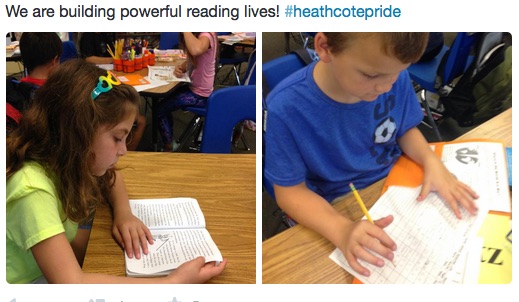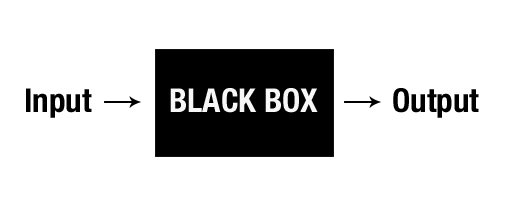Scarsdale Teachers Use Summer for Curriculum Innovation
- Category: Schools
- Published: Thursday, 24 September 2015 14:02
- Melissa Hellman
 How did Scarsdale's teachers spend their summer vacations ..... creating exciting opportunities for students in the fall. The Board of Education study session on September 21 was devoted to summer curriculum work and its impact on student learning.
How did Scarsdale's teachers spend their summer vacations ..... creating exciting opportunities for students in the fall. The Board of Education study session on September 21 was devoted to summer curriculum work and its impact on student learning.
Assistant Superintendant for Instruction Lynne Shain introduced the topic by reiterating the goals of summer curriculum work:
• Examine Current Curriculum (what are we doing?)
• Enhance Current Practice (how can we improve?)
• Imagine Possibilities (what might be?)
The six presentations that followed provided excellent examples of these guiding principles.
Early Literacy
Susan Luft and Trent DeBarry, the newly appointed ELA helping teachers, discussed summer work in support of the district's early literacy initiatives. Throughout the summer, Scarsdale Elementary School teachers joined educators at Columbia University's Teachers College to study methods of teaching literacy. Noteworthy authors, world-renowned teacher educators, and experts in the field of literacy and learning were on hand to support teachers in the development of best practices.
Luft and DeBarry also addressed how to ensure that reading specialists applied methods consistently across all elementary schools. They selected a common assessment tool as well as an intervention program from literacy experts Fountas & Pinnell that will identify who needs help and assist struggling readers through an intensive pull out program. Teachers are being trained in this program and every first grader is now being assessed.
 The ELA helping teachers have their own section on the district website and you can follow their efforts on twitter @ScarsdaleELA to see the program in action in the classroom.
The ELA helping teachers have their own section on the district website and you can follow their efforts on twitter @ScarsdaleELA to see the program in action in the classroom.
Here is an example of a recent tweet:
High School Physics
High school science teacher Joe Vaughan offered a demonstration of how physics instruction would build on its existing basic circuitry unit to further student knowledge to the level of complex circuitry. Vaughan had to provide a bit of history (as well as a physics lesson) in order to bring the room up to speed.  He explained that students enjoy the basic circuitry unit but general instruction has not gone beyond this level to date. The goal was to design a hands-on piece of equipment that students could use for a "black box" experiment. In science, computing, and engineering, a "black box" is a device that can be observed in terms of its inputs and outputs, without any knowledge of its internal workings. Mr. Vaughan distributed teacher-built circuitry boards with light bulbs and switches that students can toggle, then observe results and ultimately diagram the circuit. Although complex circuitry is not a NY State required part of the curriculum, the processes of experimenting, indirect observing and testing hypotheses support the higher order thinking skills Scarsdale seeks to foster among the student body.
He explained that students enjoy the basic circuitry unit but general instruction has not gone beyond this level to date. The goal was to design a hands-on piece of equipment that students could use for a "black box" experiment. In science, computing, and engineering, a "black box" is a device that can be observed in terms of its inputs and outputs, without any knowledge of its internal workings. Mr. Vaughan distributed teacher-built circuitry boards with light bulbs and switches that students can toggle, then observe results and ultimately diagram the circuit. Although complex circuitry is not a NY State required part of the curriculum, the processes of experimenting, indirect observing and testing hypotheses support the higher order thinking skills Scarsdale seeks to foster among the student body.
High School Environmental Science
Shain prefaced this presentation from science teachers Richard Clark and John Neering by announcing that this project was in the category of "Imagine Possibilities". The idea is to give teachers latitude to think outside the box and develop a "what if" scenario. Unlike Mr. Vaughan's circuitry tool that will be used in the classroom this year, it is uncertain where these ideas will lead. Rather, these are brainstorming opportunities that could inform curriculum development in the future and are part of the professional development culture that keep Scarsdale schools innovative and ahead of the curve.
Clark and Neering imagined a greenhouse built in the high school courtyard as an extension of the forthcoming Design Lab. They discussed the various ways it could add to the environmental science curriculum allowing for study of such topics as solar power, water purification, bio-fuel energy systems, green building materials, the impact of chemicals on fish and waterways, the impact of climate change on sea levels, aquaculture and hydroponics, and vertical farming.
Technology in the Elementary School
Paul Tomizawa, Head Computer Teacher at the elementary level, discussed a summit meeting of 4th and 5th grade teachers to evaluate the 1to1 model (each student has a Chromebook) that is underway in these grades. It was an opportunity to share expertise and develop best practices. They reviewed the management software that allows teachers to monitor student accounts and also discussed the development of digital literacy elements such as blogging and creating on-line digital portfolios.
 Also convened was an iPad training day for teachers in K-3 with a focus on how to integrate iPad technology and tools into the curriculum. For example, kindergarten students are using the iPad camera to take pictures of math concepts in their school buildings. There are also publishing tools available such as an application called "Book Creator" which students are using to create eBooks.
Also convened was an iPad training day for teachers in K-3 with a focus on how to integrate iPad technology and tools into the curriculum. For example, kindergarten students are using the iPad camera to take pictures of math concepts in their school buildings. There are also publishing tools available such as an application called "Book Creator" which students are using to create eBooks.
iPads in the 6th Grade Math Classroom
Erik Arfsten, 6th grade math teacher, described the development of the 1to1 iPad program in sixth grade math classes. Teachers worked over the summer to integrate this tool into the classroom in a way that would not become a big distraction for students. One day was spent researching applications that would supplement the curriculum and offer additional practice for students. Teachers also looked at applications that would provide deeper content knowledge as enrichment for students who may be ready to move ahead on a subject before the majority of the class. An additional day was spent on the concept of creating a paperless classroom. Arfsten is now piloting this program and reported that his classroom is almost entirely paperless with the exception of exams. Students can type or take hand written notes on their iPads and save them on Google drive making them accessible from any Internet enabled device.
STE(A)M in the High School
The final portion of study session, presented by Lisa Yokana, Art Teacher, and Jeremy Szerlip, Science Teacher, was on developing the STE(A)M course sequence at the high school. For some background on this initiative you can read our coverage here. Their summer work focused primarily on the two introductory level courses with emphasis on making sure the courses were consistent in terms of mindset, design thinking and documentation. They concluded the courses should be project based, contain open-ended problems with multiple solutions, connect the work to science/engineering principles and foster creative confidence in students. Yokana and Szerlip also mentioned that an important goal is to create an appealing entry point to the STE(A)M field for both boys and girls and making sure that the selected projects appeal to both sexes. They consulted with Engineering teachers from the Science Leadership Academy who are currently in the second year of delivering their program.
The first course, Introduction to Design and Fabrication, will expose students to design thinking, tool use and the importance of documentation. Potential projects are to take apart and repurpose old electronics, build a balloon powered car with a 3d printer, design a book bag, design and build a chair-then flat pack it. The second course, Introduction to Engineering, will expose students to different types of engineering with potential projects such as wearable technology and bridge building. There are currently 13 students prototyping these projects who are getting independent study elective credit for their participation. These courses are currently scheduled to begin in the fall of 2016 as electives that will meet two days a week.
These six presentations were samples of the important work that takes place over the summer to maintain and create the rich curriculum offerings for which Scarsdale is known as a model school district. The study session can be viewed in its entirety on the Board of Education's Video on Demand site.







